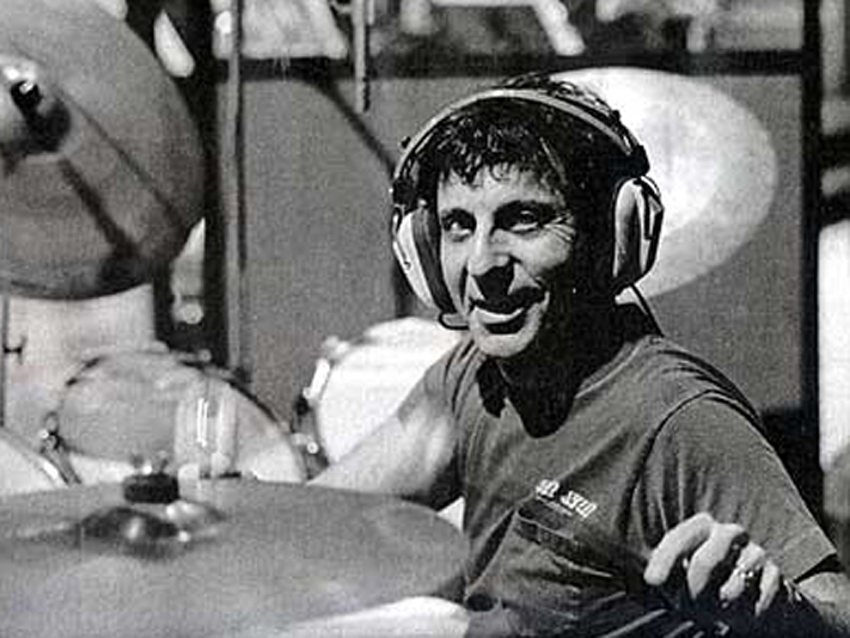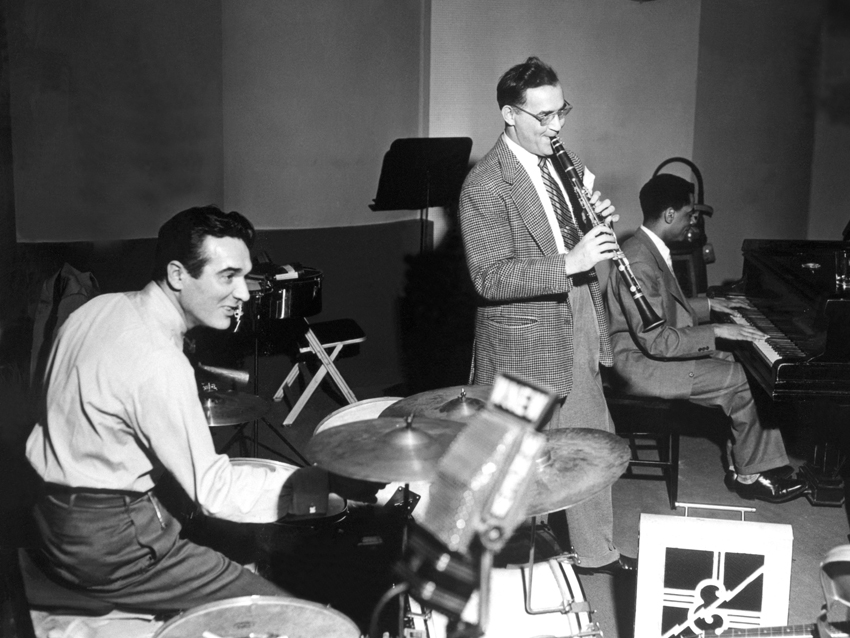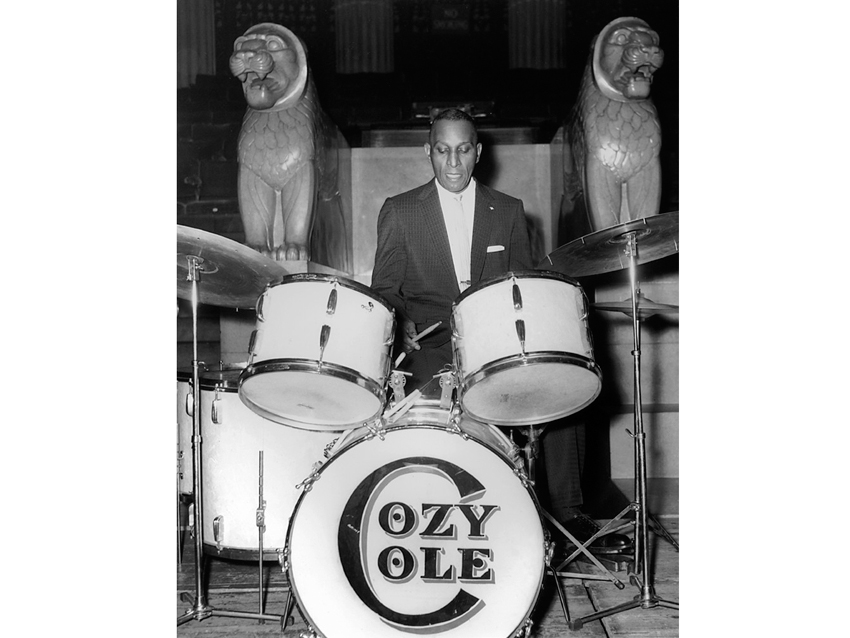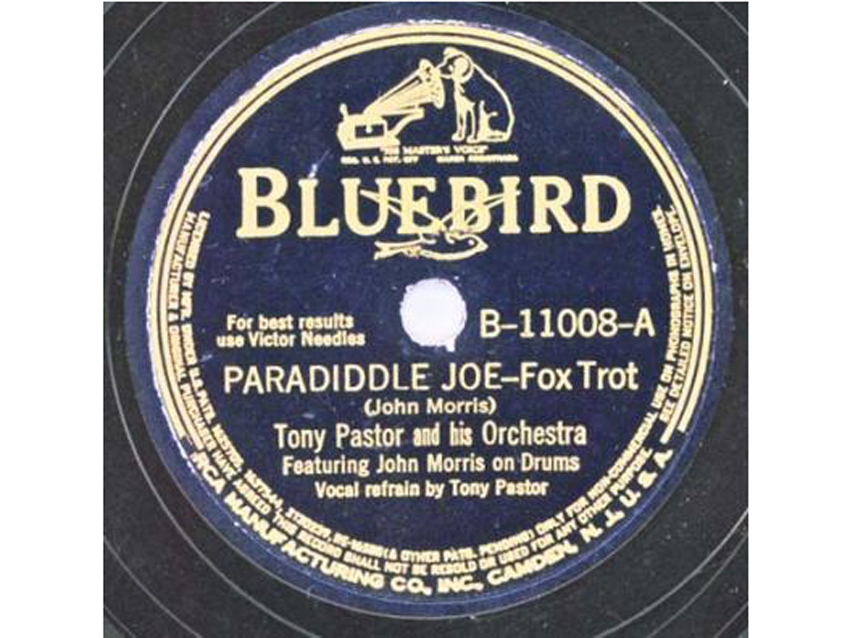
Session legend Hal Blaine picks five essential drum records
“People ask me all the time, ‘What’s the hardest part of being a studio musician?’" says drumming legend Hal Blaine. "And I tell them the truth: ‘Finding a parking space.’"
He's got a million of 'em. A mention of his daughter, who recently moved to the Lone Star State, elicits this one-liner: "You can always tell a Texan – but not much."
All that's missing is the "ba-dum-ching!" At 84, Blaine is still sharp as the rim shots he used to lay on hundreds (or is it thousands?) of Top 40 hits in the '60s and '70s. Though officially retired from active performing and recording, he continues to do the occasional clinic. "Well, I can't just do nothing," he explains. "Besides, all drummers are show-offs. It comes naturally to them."
Except when it comes to the recording studio – at least in the case of Blaine, as he'll tell you. Whether it was providing the poignant backbeat and rollicking fills for the epic grandeur of The Ronettes' Be My Baby or the smooth and poetic glide for Frank Sinatra's Strangers In The Night, the veteran sticksman says, "I’m an accompanist. I play the song. Bouncing all over and throwing my sticks in the air and crashing into things – there’s guys who do that who are great, but I’m not one of them. 'Less is more' was always my rule."
During his heyday, at a time when his drumming was perhaps the most consistent sound on transistor radios across the globe, Blaine didn't go out of his way to check out his competition. For one thing, he was booked. "All day, every day, I was making records," he says. Surprisingly, though, one of the most-studied and emulated drummers in history admits that he didn't want to be influenced by what others were doing.
"I really stayed away from the radio during that time," Blaine says. "When I went in to do a session, I wanted to do my thing; I didn’t want some other guy’s style to creep into my playing. Besides, I already had my influences, the people I listened to when I was just starting out. They made their mark."
As you might expect, most of Blaine's picks for five essential drum records pre-date his professional career. “A great drum record is a great song record," he says. "And a great song is a story. You want to be a part of telling that story. It can be kind of silly, like Paradiddle Joe, or it can be something more serious like Buddy Rich on the West Side Story medley. It doesn't matter as long as it tells you what you want to know and if the drummer is doing his job."

Benny Goodman - Sing, Sing, Sing (1937)
“This was a long, long, long record. Even before we did MacArthur Park – and that was over seven minutes long – there was Sing, Sing, Sing.
Gene Krupa was probably the first guy to come along who created theatrics. That’s why Benny Goodman liked him – he was an exciting guy to watch in this really big band. But Gene was also a well-learned musician. In fact, when I came home from Korea, the first thing I did was look up his teacher, because I wanted to learn all that things that Gene knew.
“Sing, Sing, Sing was written by Louis Prima, and Gene does a killer on it with Benny. He plays time, but he’s also doing all of these fills, and what's really incredible is, you can learn when to do a fill and when not to by listening to this. It's an instrumental, so there’s a lot of room to do a lot of fancy stuff. For me, as an accompanist, it wasn’t the same kind of thing, but I sure did love what Gene was doing.
“You can get a sense of his personality from his playing here. Like I said, drummers are show-offs, and that’s what this song is all about.”

Cozy Cole - Topsy Part 2 (1958)
“Cozy Cole played with a lot of the big bands, but this song is him on his own.There’s a certain simplicity to it, a groove and an in-the-pocket feel. Man, he shows you how it’s done here. What a great player.
“You actually heard this on the radio, too. It was quite popular and became a very influential recording. Cozy plays with a lot of sophistication. I use the word ‘slick’ a lot, but there’s a smoothness to his sound and his delivery that I really like.”

Tony Pastor And His Orchestra - Paradiddle Joe (1952)
“Of course, a paradiddle is a particular rudiment that drummers play. If you want to hear what one sounds like, all you have to do is listen to Paradiddle Joe. They even take breaks where it’s all paradiddles.
[Sings] “‘He wants to show you how to play a paradoodle. Play a single! Play a double!’ [Laughs] It’s a fun thing, kind of a novelty, but it sticks in your head, and the drumming is terrific. You get single, double and triple paradiddles in one song. It’s from hand to hand, both sides working, and you can play all over your drums doing paradiddles. It's like one big drum lesson.”

Buddy Rich - West Side Story Medley (1966)
“Buddy was a friend of mine – not a close friend, but we always got along well. He hired me when he produced his daughter’s album. Somebody asked him once, ‘Why didn’t you play on your kid’s record?’ And he said, ‘Because I wanted the best.’ What a great compliment.
“The West Side Story Medley is an amazing performance. Everything that Buddy did well, he did in this song. There’s a lot of key changes in the music, and his drums would change right along with them, which was something that we all learned from. You might be playing smooth and silky in one section, and then in another section you open up and get really wild. Buddy could play wild, let me tell you.
“Back in those days, I just called it ‘dynamics.' Buddy might have called it something else – I wouldn't know. But one thing is for sure: He was a real master.”

Mason Williams - Classical Gas (1968)
“This is one of my favorite songs. I was Mason Williams’ drummer during this time, but I had to be in England for some work, so for this song he used Jim Gordon. What can you say? Jim did a phenomenal job.
“In fact, I’ve played this song a million times with Mason live, and I’ve never changed it. I like what Jim did on it, so that’s what I would play. There’s powerhouse drumming on the track, but it’s all in the right place at the right time. It’s supposed to be classical, but then it switches to rock 'n' roll, and Jim is right there, all the time just playing beautifully. One of the licks, the ‘ba-da-da-da-da-dahh!’ bit, has become almost a standard in the drum world.
“Jim was such a very talented guy who, unfortunately, got into drugs. I used to get a lot of work for him, which I was happy to do because he was terrific. He went to England and played with a bunch of guys, and he came back a junkie. It was very sad.”

Joe is a freelance journalist who has, over the past few decades, interviewed hundreds of guitarists for Guitar World, Guitar Player, MusicRadar and Classic Rock. He is also a former editor of Guitar World, contributing writer for Guitar Aficionado and VP of A&R for Island Records. He’s an enthusiastic guitarist, but he’s nowhere near the likes of the people he interviews. Surprisingly, his skills are more suited to the drums. If you need a drummer for your Beatles tribute band, look him up.
"Reggae is more freeform than the blues. But more important, reggae is for everyone": Bob Marley and the Wailers' Catch a Fire, track-by-track
“Part of a beautiful American tradition”: A music theory expert explains the country roots of Beyoncé’s Texas Hold ‘Em, and why it also owes a debt to the blues
"Reggae is more freeform than the blues. But more important, reggae is for everyone": Bob Marley and the Wailers' Catch a Fire, track-by-track
“Part of a beautiful American tradition”: A music theory expert explains the country roots of Beyoncé’s Texas Hold ‘Em, and why it also owes a debt to the blues









